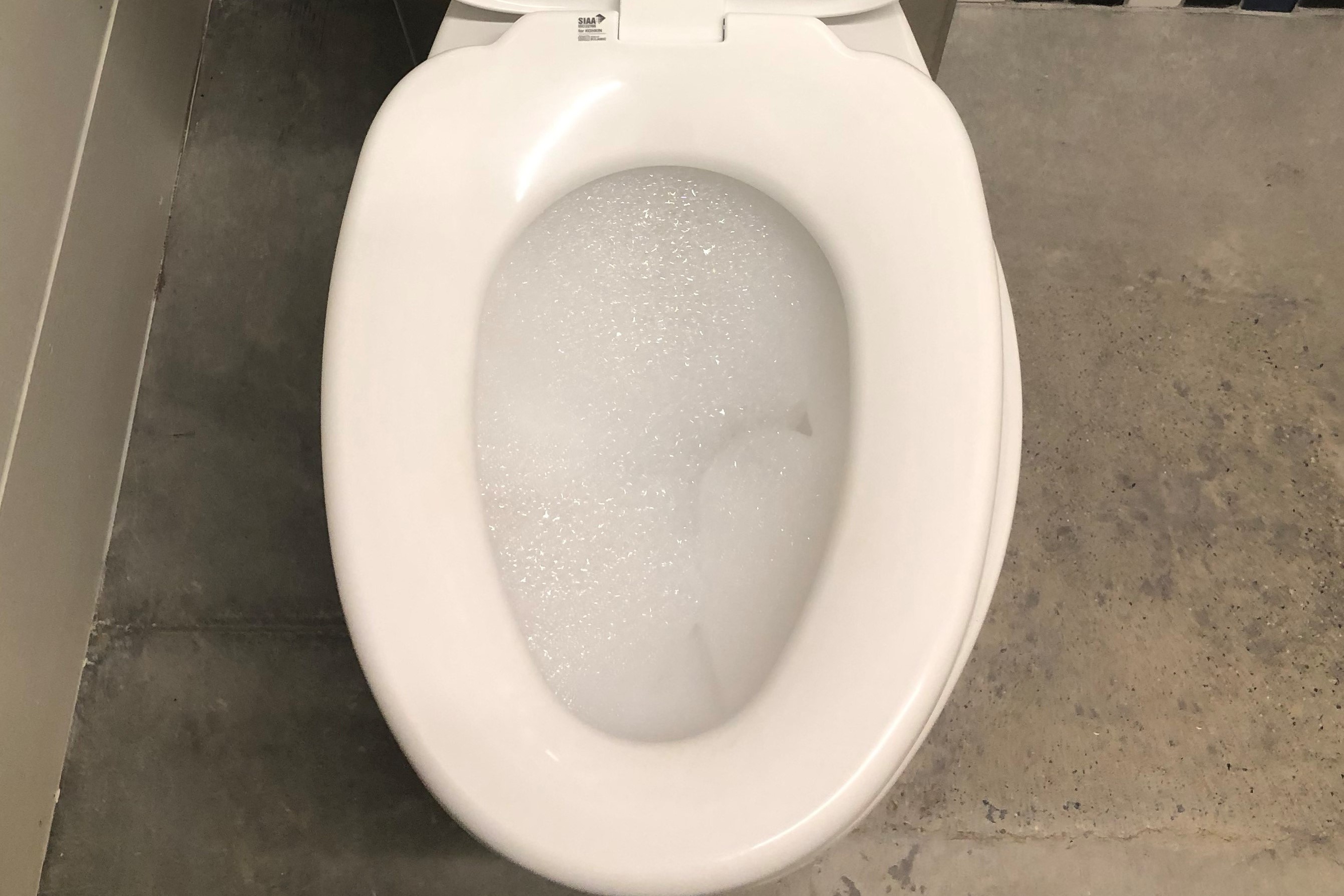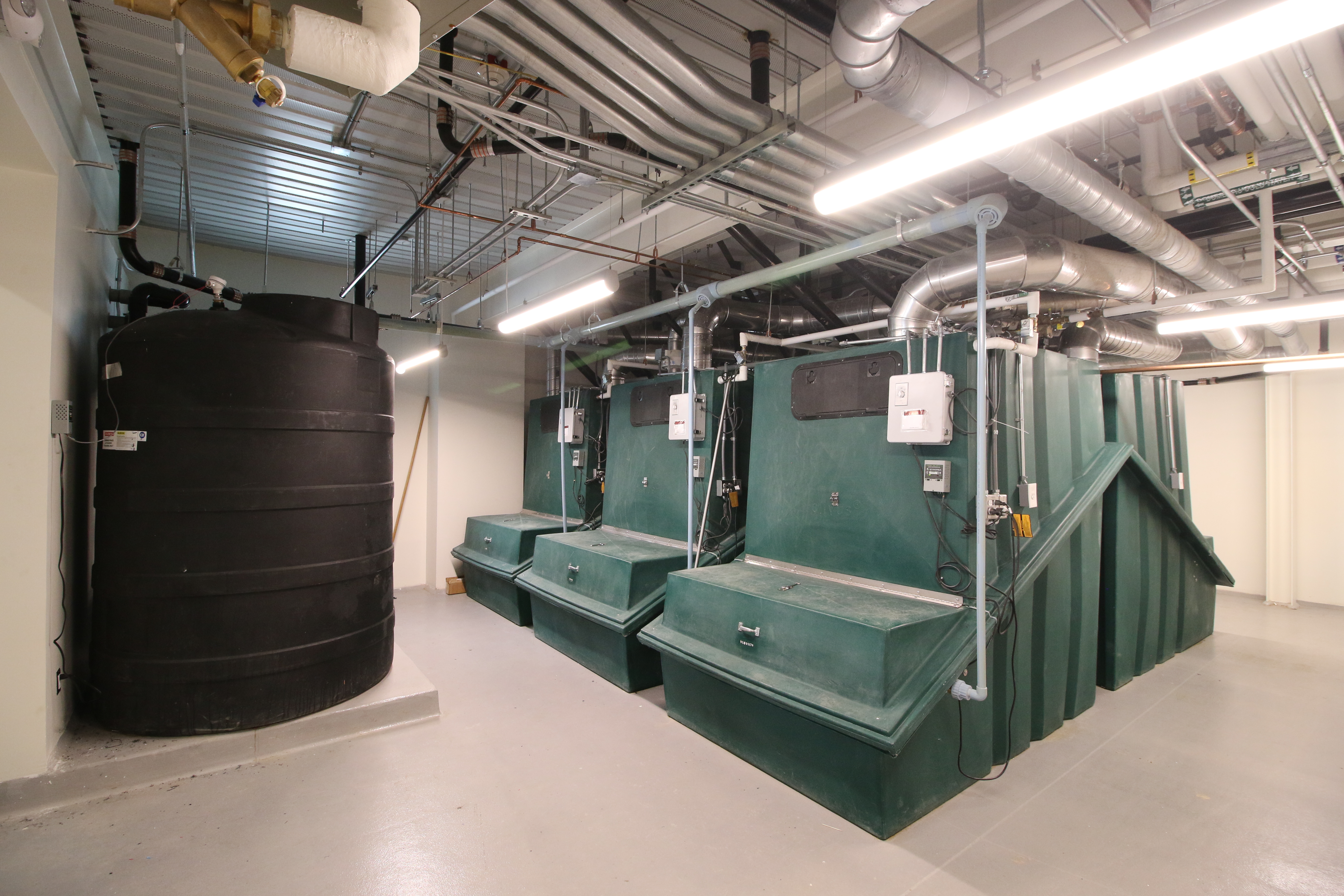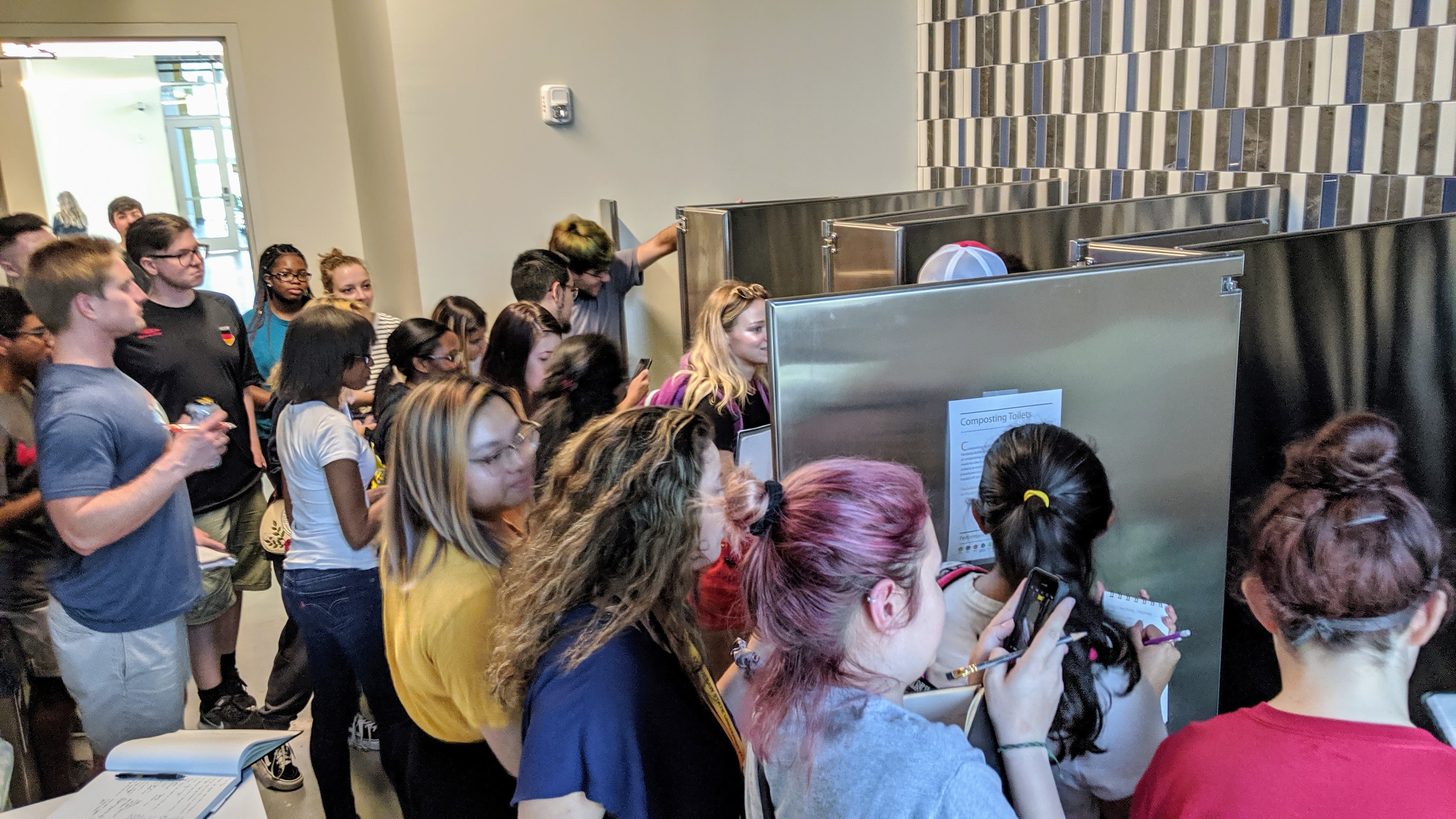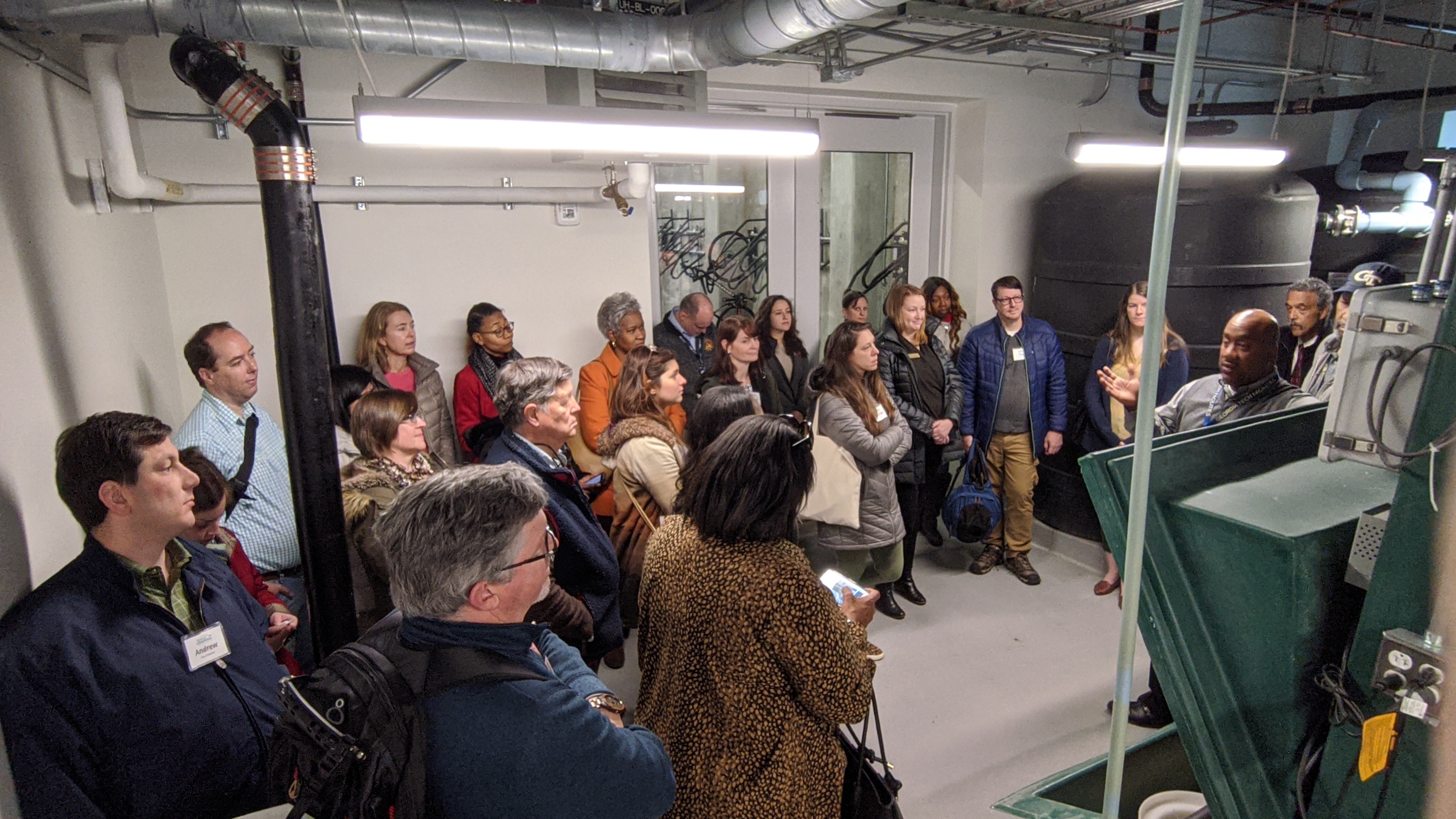Petal: Water
Imperative: Net Positive Water
Composting Toilets
The Net Positive Water Imperative requires, among other things, that all toilet waste must be treated on-site and managed either through reuse, a closed loop system, or infiltration. For toilet waste, the design team analyzed two options: a compost toilet system and a blackwater system.

The blackwater option required more water, which would necessitate are larger cistern and a larger rainfall catchment area. This would both increase costs and conflict with square foot limitations of the building. In addition, the blackwater option had increased regulatory burdens and operational costs. Therefore, the design team selected the compost toilet scenario.
Composting toilets use about a teaspoon of water to activate a biodegradable foam to coat the sides of toilets. The waste is transported to one of six bins that are housed in the building's basement. The bins contain wood shavings that receive the waste and help natural processes decompose the waste. Because most biowaste is actually liquid, the liquids slowly seep to the bottom of the bins where a sump pump transfers the liquid, called leachate or compost tea, to one of two 1,000-gallon storage tanks. About once a month, 2,000 gallons of compost tea is transported to a local wastewater treatment facility where it is stripped of its nutrients for beneficial reuse.
These foam flush toilets have become one of the most talked about features of the building, which is why we say that there is a lot of "potty talk" in The Kendeda Building! While the excitement is all in good fun, it is also a serious matter. Atlanta has an overburdened sewer system and as a result, it has some of the highest water and sewer rates in the country. Because the building's compost toilet system does not connect to the sewer, it does not burden an already stressed system. Moreover, the composting toilet system eliminates the carbon pollution embedded into the electricity required to treat and convey water and wastewater.



